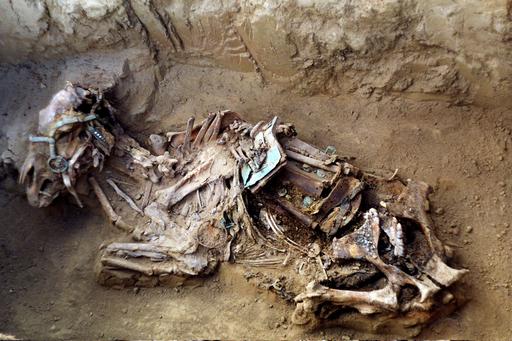
- Home
- News and events
- Find news
- The mystery of when the first horse was tamed is solved
The mystery of when the first horse was tamed is solved
Where were modern horses first domesticated? And when did they take over the rest of the world and supplant all the other types of horses that had existed in the past? A long-standing archaeological mystery has been solved thanks to a large international team of researchers.
“DNA studies of domesticated animals can make as important a contribution to our knowledge of prehistory as human DNA,” says Kristian Kristiansen, Professor of Archaeology at the University of Gothenburg, who contributed to the study published in Nature today.

It was on the Pontic–Caspian steppe of North Caucasus that horses were first tamed and then took over the rest of Eurasia within a few centuries. This has been shown by an international study led by palaegeneticist Ludovic Orlando at the French research organization CNRS (Centre national de la recherche scientifique). The study has solved a riddle that scientists have grappled with for decades and it required 162 specialists in archaeology, paleogenetics and linguistics from nearly 120 different research institutes.
A few years ago, Orlando’s research team were looking at the Botai site in Central Asia, which had provided the oldest archaeological evidence for domesticated horses. But something didn’t add up in the DNA results; these horses that lived 5500 years ago were not the ancestors of our modern domesticated horses.
The steppes of Central Asia, along with other areas such as Anatolia, Siberia and the Iberian Peninsula were crossed off the list as they also proved to not be where the domesticated horse originated.
This led the researchers to extend their study to encompass the whole of Eurasia. First they analysed the genomes of horses that lived between 50,000 and 200 years BCE and then compared this with the genome of modern domesticated horses. That produced a result.

Supplanted all wild horse populations

Although Eurasia was once populated by genetically distinct horse populations, a dramatic change occurred between 2000 and 2200 BCE. During that period, a single genetic profile, previously limited to the Pontic-Caspian steppe (North Caucasus), began to spread outside its native area and supplant all the wild horse populations from the Atlantic to Mongolia within just a few centuries. The genetic data also indicate an explosive change in demographics that is unparalleled in the last 100,000 years.
It was then, some 4000 years ago, that mankind took control of horse reproduction and began to selectively breed them in large numbers.
The researchers found two striking differences between the genome of this horse and the genome of the populations it supplanted. One is linked to more docile behaviour and the other indicates a stronger spine. These differences might be some of the reasons for the success of the modern horse, the scientists believe.
Importance of incorporating animal history

The study also reveals that the horse spread throughout Asia around the same time as horse-drawn chariots and Indo-Iranian languages. However, the migration of Indo-European populations from the steppes of Central Asia to Europe in the third millennium BCE cannot be due to these horses, because their domestication and spread came only later. This demonstrates the importance of incorporating animal history into the study of human migration and inter-cultural encounters.
“I contributed to the interpretation of the expansion of the domesticated horse in connection with the expansion of Bronze Age warfare using armoured chariots. The study emphasises two things. Firstly, that DNA studies of domesticated animals can make as important a contribution to our knowledge of prehistory as human DNA; and secondly, that the domesticated horse from around 4000 years ago has been the most important animal used for transport throughout history, right up to industrialisation, and that it contributed to the rise and fall of civilizations,” says Kristian Kristiansen, Professor of Archaeology at the University of Gothenburg, and one of the co-authors of the article The origins and spread of domestic horses from the Western Eurasian steppes published in Nature today, 20 October.
Link to article: https://www.nature.com/articles/s41586-021-04018-9
The study was led by the Centre for Anthropobiology and Genomics of Toulouse, headed by CNRS research professor Ludovic Orlando, and primarily funded by the European Research Council (Pegasus project) and France Genomique (Bucephale project).
Text: Johanna Hillgren
Contact details:
Kristian Kristiansen, Phone: +46 (0)704-185 767, e-mail: kristian.kristiansen@archaeology.gu.se


